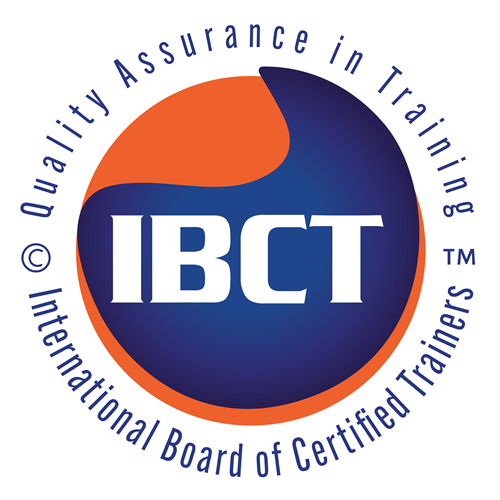This article shows how IBCT applies Microsoft’s AI Maturity Model to HRD, explains the three stages of AI use in training, and clarifies why trainers stay central in delivery while AI supports, augments, or automates specific tasks.
From this article, you will learn how the International Board of Certified Trainers (IBCT) is aligning its standards with Microsoft’s AI Maturity Model to guide the use of Artificial Intelligence in Human Resource Development. You will see how AI supports trainers at three levels, from assisting with routine tasks to augmenting training design with data-driven insights, to automating certain processes under human oversight. You will also understand why trainers remain central to program delivery, and how leaders can decide which HRD tasks belong in assisted, augmented, or autonomous stages while protecting ethics and learning quality.
Click to view the infographic
The IBCT Model of AI in HRD and Training
An Infographic
This infographic illustrates the three stages of AI in HRD and training, based on Microsoft’s AI Maturity Model. It highlights how AI supports, augments, and automates specific tasks while trainers remain central to delivery. IBCT models the responsible use of AI in HRD by keeping professional standards in focus and ensuring that technology complements rather than replaces the role of certified trainers.
Artificial Intelligence is no longer a future vision. It is now a practical tool that reshapes work, learning, and development. In Human Resource Development and Training, AI is not only about automation. It is about how humans and machines work together.
AI is not replacing trainers. It is reshaping their role, extending their impact, and changing how organizations approach learning. Trainers still deliver programs. AI supports them with scale, data, and efficiency.
Microsoft’s AI Maturity Model?
Microsoft’s AI Maturity Model: A Starting Point
Microsoft defines three stages of AI-human collaboration.
1- Assisted Intelligence
AI supports human work with data, analysis, and insights.
2- Augmented Intelligence
AI acts as a partner, handling routine tasks and providing tailored recommendations with human oversight.
3- Autonomous Intelligence
AI operates within set parameters without real-time human input.
IBCT’s Role
IBCT’s Role: Keeping Trainers at the Center
The International Board of Certified Trainers studies how Microsoft’s AI Maturity Model fits into HRD. The goal is clear. AI must support trainers while professional standards stay intact.
The trainer’s role in delivery does not change. Certified trainers are not only content presenters. They design active learning. They mentor professional growth. They protect fairness and trust in training.
AI offers support. It automates scheduling and reporting. It analyzes learner needs. It tailors materials to match skill gaps. These functions improve efficiency.
HRD still depends on human interaction. Trainers build trust. They respond to emotions in the room. They add cultural and organizational context. No AI system replaces these elements. IBCT stresses that AI supports trainers, not substitutes them.
IBCT standards make the balance practical:
-
Competency in instructional design. Trainers check that AI-generated content meets objectives and fits the culture.
-
Competency in facilitation. Trainers lead live sessions and build rapport that AI cannot provide.
-
Ethical responsibility. Trainers prevent bias in AI-driven recommendations and keep use transparent.
-
Continuous professional development. Trainers stay current with AI tools while strengthening human-centered skills.
IBCT provides a framework for organizations that want to use AI responsibly in HRD. The focus is quality, ethics, and learner experience. Trainers lead every delivery process.
The IBCT Approach
Applying the 3 Stages of AI-Human Collaboration in HRD
1- Assisted Intelligence: AI as a Tool
AI provides support. Humans remain in control.
Applications:
-
Automating scheduling, attendance, and reminders.
-
Editing and summarizing training materials.
-
Chatbots answering FAQs before or after sessions.
Impact: Trainers spend less time on logistics and more on delivery.
IBCT Insight: Trainers stay in control. AI frees time for interaction and facilitation.
2- Augmented Intelligence: AI as a Partner
AI collaborates with trainers and improves decision-making. Humans guide outcomes.
Applications:
-
Scanning data to identify skill gaps.
-
Recommending learning paths validated by trainers.
-
Supporting simulations or coaching with feedback.
-
Forecasting future skills for workforce planning.
Impact: Trainers become strategic partners. They design and deliver with better evidence.
IBCT Insight: AI analyzes and recommends. Trainers contextualize for culture, ethics, and learning quality.
3- Autonomous Intelligence: AI in the Driver’s Seat
AI runs systems independently within limits. Trainers monitor and oversee.
Applications:
-
Adaptive e-learning platforms that automatically adjust difficulty based on learner performance.
-
Compliance training that runs autonomously, with AI tracking completion and issuing certificates.
-
Recruitment and onboarding bots that manage early-stage processes before trainers take over for live engagement.
-
Continuous skill monitoring systems that flag employees needing re-training or upskilling.
Impact: AI brings scale and efficiency. Trainers focus on leadership, coaching, and cultural programs.
IBCT Insight: Even at this stage, trainers remain responsible for delivery and facilitation. AI can run systems, but only humans can create transformative learning moments.
The Leadership Challenge: Choosing Wisely
The issue is not if AI will impact HRD. It is how. Leaders must decide:
-
Which tasks stay assisted, like administration.
-
Which tasks move to augmentation, like learning design.
-
Which tasks operate autonomously, like compliance training.
This requires balance. Efficiency must align with ethics, culture, and development. Trainers remain central.
A Smarter Future for HRD with IBCT and AI
Final Thoughts
AI is not the end of training. It is the start of a human-centered model. By moving across assisted, augmented, and autonomous intelligence, organizations gain scale and efficiency while keeping trainers in the lead.
IBCT’s adoption of Microsoft’s AI Maturity Model confirms this. AI supports, augments, and automates. It does not replace the judgment, empathy, or adaptability of trainers. The future of HRD belongs to leaders who apply AI strategically. Those who keep trainers at the center will achieve lasting training outcomes.
Join Now
The world’s most powerful and popular train-the-trainer program. Be part of the most empowered HRD community across the globe.




Dr. Ahmed has a deep insight in HRD and understands that at the end of the day it’s all about people.